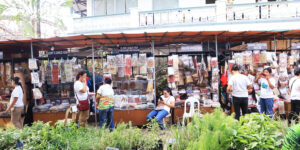
COVID-19 lockdowns have brought rapid and “unprecedented” improvements in air quality in some parts of the world, with Southeast Asia seeing a 40 percent reduction in the level of harmful airborne particles caused by traffic and energy production in 2020.
The United Nations World Meteorological Organization air quality and climate bulletin also saw emissions reductions and improved air quality in China, Europe and North America during the pandemic’s first year while countries such as Sweden that had already good air quality to begin with saw less dramatic improvements.
Oksana Tarasova, chief of WMO’s atmospheric environment research division, explained that although the clean air development had been welcome for many people with breathing difficulties, the absence of harmful microparticles unfortunately left the path clear for naturally occurring ozone, “which is one of the most dangerous pollutants.”
The Air Quality and Climate Bulletin – WMO’s first – is based on studying key air pollutants from more than 540 observation stations in and around 63 cities from 25 countries, across the world’s seven geographical regions.
Analysis showed decreases of up to 30-40 percent overall of PM2.5 concentrations during full lockdown in 2020, compared with the same periods in 2015-2019. Changes in ozone concentrations varied greatly across regions while sulfur dioxide concentrations were 25 to 60 percent lower in 2020. Carbon monoxide levels were also lower for all regions.
Air pollution has a significant impact on human health. Estimates from the latest Global Burden of Disease assessment show that global mortality increased from 2.3 million in 1990 to 4.5 million in 2019.
The global slowdown caused by the pandemic has demonstrated what is achievable in terms of significantly improving air quality. Many would certainly benefit from a sustained drop in the levels of harmful airborne particles from emissions due to human activity but as the Philippine pandemic response has shown, the rest of the planet cannot afford a prolonged series of lockdowns and restrictions.
For now, the world’s policymakers, industry leaders and governments can look to those few months when cleaner air was achieved as an inspiration for what is possible if we decide to put more effort into reducing emissions and improving the quality of the air that we breathe.*







